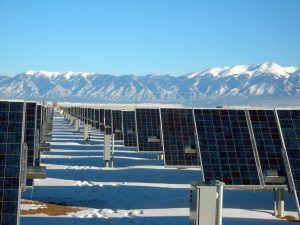As installation prices fall and usage surges, solar energy is becoming one of the most rapidly
expanding renewable energies being adopted in homes worldwide.
A primary motivating factor for homeowners who install solar panels — besides lower electric
bills — is often an environmental one. Solar energy is much more kind to the environment than
more traditional energy sources like fossil fuels or coal, but there are still a few negative
consequences.
The good: minimizing your carbon footprint

Solar and geothermal energies are unique among renewables in the sense that households can
choose to independently adopt the technology, rather than power companies making the shift.
Someone can’t, for example, shift from natural gas to hydroelectric power for just their
household, but they can install photovoltaic cells on their roof.
Converting to solar power at your home is a powerful way to reduce your carbon footprint. The
average person in the United States produces 19.8 tons of carbon emissions per year. An
average family of four produces between 60-80 tons of carbon per year by doing everyday
things like driving, running utilities and buying groceries, according to the Nature Conservancy.
If that same household of four people converts to solar energy, they can offset their carbon
footprint by an average of 6 tons.
Calculate your own carbon footprint using a calculator on Nature Conservancy’s website or on
the EPA’s website.
The bad: solar panel production materials and risks

Emissions, greenhouse gases and pollution are not an issue with solar power — other than
when the panels are being produced and distributed. Despite having a very small carbon
footprint once solar panels start producing energy for consumers, some environmental damage
is done during the production stage.
It’s worse in some places than others. A study conducted by Northwestern University found that
the carbon footprint for producing solar panels in China is twice as high as those produced in
European countries. That’s partly because China puts less emphasis on efficiency and “green”
standards at its manufacturing plants than its European counterparts.
If transportation is factored in — 60 percent of solar energy is produced in Europe, and so the
panels would have to be shipped overseas — the footprint would be even higher.
Chemical spills can also be a concern during solar panel production. Many chemicals are used
for solar panel production, including cadmium, hydrogen sulfide, lead and around a dozen
others. These are all either hazardous or irritants if they come into contact with people.
During routine operation, though, photovoltaic cells don’t produce gas or liquid pollutants, or
radioactive waste.
The ugly: the physical space of solar farms

Solar panels installed on roof tops have minimal impact on their landscapes, but photovoltaic
power stations — often referred to as solar farms — take up a lot of square footage, can be
aesthetically undesirable and contribute to habitat loss.
A study conducted by the Centre for Renewable Energy Sources said that the aesthetic side of
things can be mitigated by choosing sites wisely. Reclaiming land, like old mine sites, is a great
way to offset the negative impact of land use.
The space issue is also a problem once the panels have reached the end of their lifespan. Without a
solid plan in place to recycle the solar panels, the remaining “junk” will take up a lot of space in
landfills, much like other forms of technology like old cell phones, TVs and computers.
Solar panels have a lifespan of 25-30 years, so the first big wave of panels that need to be
recycled will hit around 2030, according to a study by Penn State. An estimated 500,000 solar
panels were installed globally every day in 2015. The International Renewable Energy Agency
(IRENA) estimates that there will be 60-78 million tons of solar panel waste by 2050. It’s possible to
reuse a lot of the materials in the panels — $15 billion worth of materials, according to IRENA.
Concentrated solar power plants, which use mirrors to concentrate the sun’s energy to drive
traditional steam turbines or engines that create electricity, require a lot of water to stay cool.
For this type of solar energy, the use of 650 gallons of water per megawatt hour of electricity
produced could be considered another negative environmental impact.
Final word
The environmental impact of solar energy is very small compared to other energy sources, even
when transportation, production, installation, water use and recycling issues is included. Most
negatives associated with solar energy can be offset by strategic planning and high standards in
the workplace and during production. Like other renewable energy sources, solar energy
produces a small carbon footprint and is an excellent source for environmentally-friendly energy.
Author: Crystal Huskey
Bio: Crystal Huskey is a content writer at PTACUnits.com, an online retailer of new and reconditioned PTACs, along with a full range of parts and accessories since 1984.
Website Link: https://www.ptacunits.


